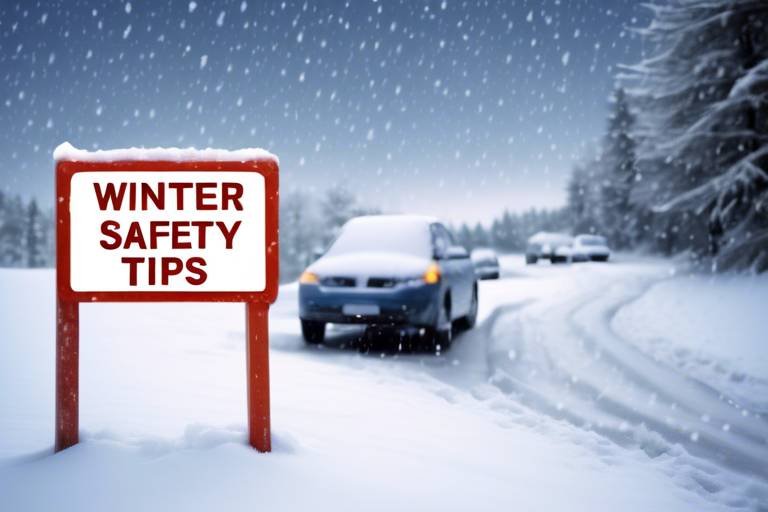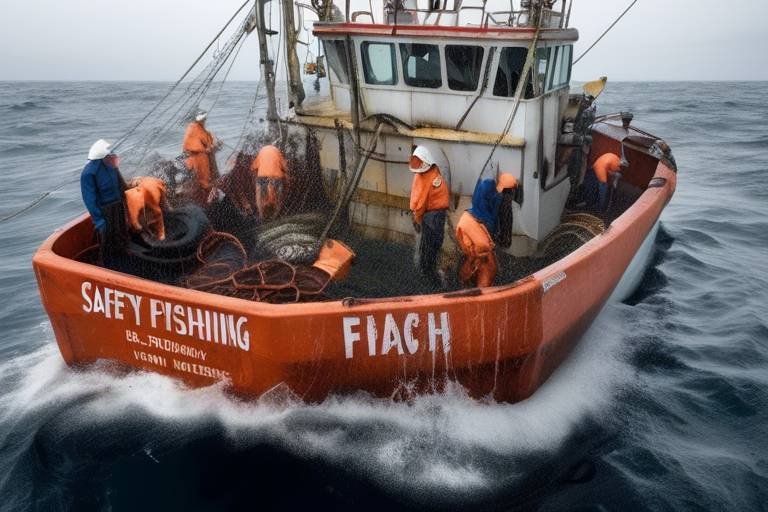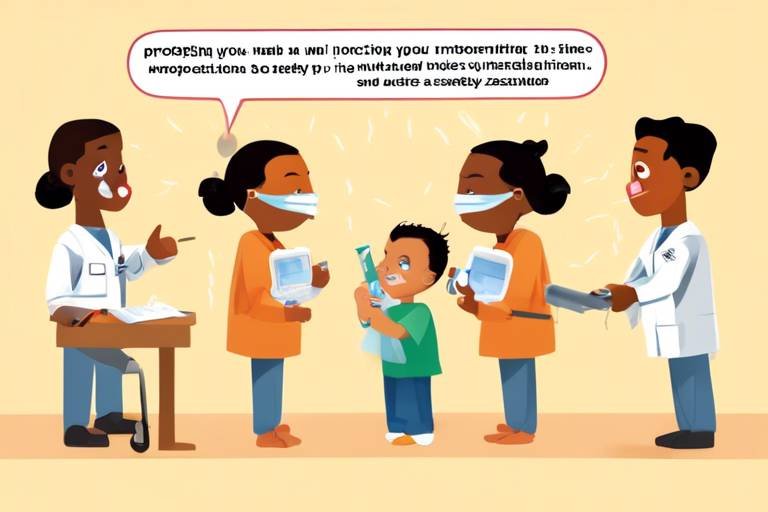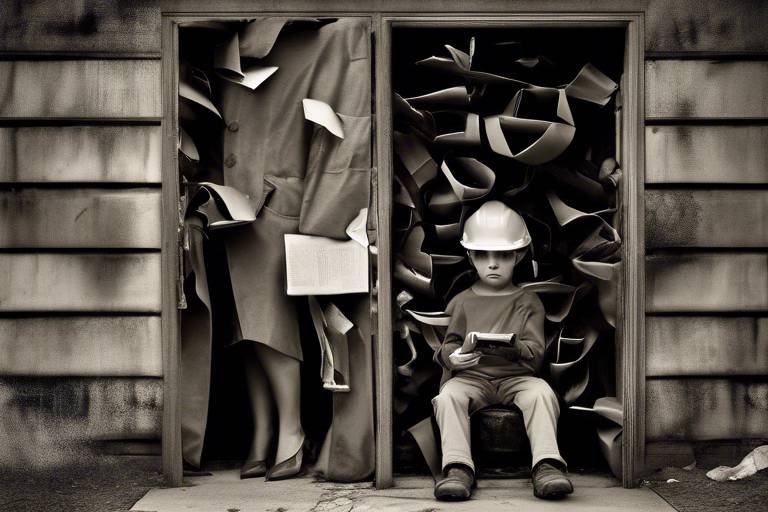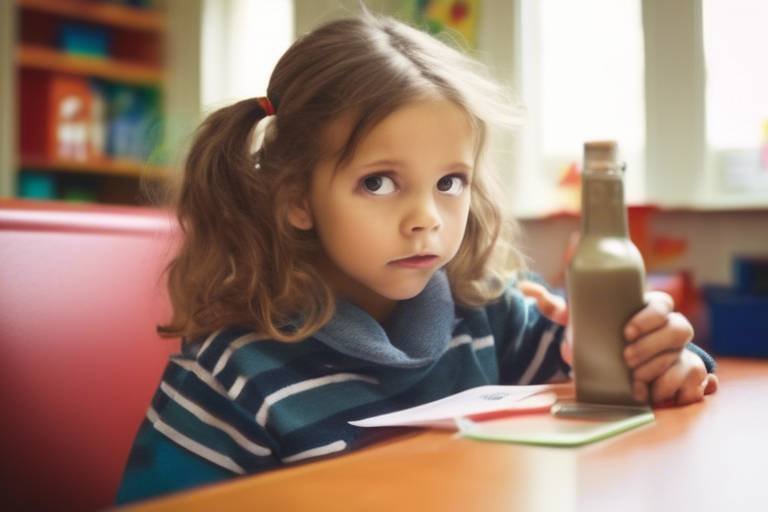Ensuring Children’s Safety During Community Festivals
Community festivals are a fantastic way for families to come together, celebrate, and create lasting memories. However, as joyous as these events can be, they also come with their own set of challenges, especially when it comes to ensuring the safety of our children. It's essential to recognize that children are naturally curious and adventurous, often wandering off to explore the various attractions. This makes it crucial for festival organizers, parents, and volunteers to collaborate effectively to create a safe environment. In this article, we will delve into some essential strategies and practices to keep our little ones safe during these vibrant celebrations. By implementing thoughtful planning, establishing safe zones, and fostering communication, we can ensure that everyone enjoys the festivities without worry.
Effective safety measures begin with thorough planning. Organizers should assess potential risks and develop strategies to mitigate them, ensuring a secure environment for children during the festival. This involves not just identifying hazards but also creating a comprehensive safety plan that includes everything from crowd control to emergency response. For instance, organizers can conduct a risk assessment to pinpoint areas that might pose a danger, such as busy streets or areas with heavy equipment. By addressing these concerns proactively, we can minimize risks and enhance the overall experience for families.
Designating specific areas as safe zones can provide children with secure spaces to play and relax. These zones should be easily identifiable and staffed with responsible adults to monitor activities. Imagine a vibrant corner of the festival filled with colorful tents, where children can engage in supervised games and crafts. This not only keeps them entertained but also allows parents to enjoy the festivities knowing their kids are in a safe environment. Safe zones can include:
- Play areas with age-appropriate activities
- Quiet zones for children needing a break
- First aid stations for minor injuries
Training staff and volunteers is crucial for ensuring children's safety. Proper training equips them with the skills to handle emergencies and maintain a watchful eye on the children in their care. This training should cover various aspects, including recognizing signs of distress in children, understanding how to respond to emergencies, and knowing the layout of the festival grounds. A well-trained team can act as a safety net, providing peace of mind for parents and guardians.
Establishing clear emergency response protocols helps staff react swiftly to any incidents. Regular drills and updates ensure everyone knows their roles in a crisis, enhancing overall safety. For example, if a child goes missing, having a designated plan in place can significantly reduce panic and streamline the search process. This could include using walkie-talkies to communicate effectively and having a clear, visible meeting point for families to reunite.
Effective communication channels among staff, volunteers, and parents are vital. Utilizing walkie-talkies or group messaging apps can facilitate quick information sharing during the festival. Imagine a scenario where a child is reported missing; with instant communication, volunteers can quickly mobilize and search the area. Additionally, signage throughout the festival can inform parents about safety measures and protocols, ensuring everyone is on the same page.
Encouraging parents to actively participate in safety efforts strengthens community ties. When parents are engaged, they can help monitor their children and assist in maintaining a safe atmosphere. This cooperation can take various forms, from volunteering to help at safe zones to simply keeping an eye on their kids while enjoying the festivities. The more involved parents are, the safer the environment becomes, turning the festival into a collective responsibility.
Implementing child identification systems, such as wristbands or badges, can significantly enhance safety. These systems help quickly reunite lost children with their guardians, minimizing distress during the event. For instance, each child can wear a brightly colored wristband that includes their name and parent's contact information. This simple measure can make a world of difference in a crowded festival setting, allowing staff to swiftly assist in reunifications.
Establishing clear lost child protocols ensures prompt action when a child goes missing. Designated meeting points and trained staff can help efficiently manage these situations. It's essential to communicate these protocols to parents before the festival begins, ensuring everyone knows what to do if a child is lost. This could include:
- Identifying a central meeting spot
- Distributing information cards with emergency contacts
- Training volunteers on how to handle lost child reports
Educating children about safety measures empowers them to make informed decisions. Interactive workshops or briefings can teach kids how to stay safe and recognize potential dangers during the festival. For example, engaging children in fun activities that incorporate safety lessons can help them remember important information. Just like learning to look both ways before crossing the street, understanding festival safety can become second nature with the right approach.
Q: How can I ensure my child stays safe at a community festival?
A: Communicate safety measures with your child, establish a meeting point, and consider using identification wristbands.
Q: What should I do if my child goes missing?
A: Immediately report to festival staff, head to the designated meeting point, and stay calm while the search is conducted.
Q: Are there any specific safety zones for children at festivals?
A: Yes, many festivals designate safe zones with supervised activities where children can play safely.
Q: How can parents get involved in ensuring safety?
A: Parents can volunteer, help monitor children in safe zones, and participate in safety planning discussions with organizers.

Planning for Safety
This article discusses essential strategies and practices to keep children safe during community festivals, highlighting the importance of planning, awareness, and cooperation among organizers, parents, and volunteers.
Effective safety measures begin with thorough planning. Organizers should assess potential risks and develop strategies to mitigate them, ensuring a secure environment for children during the festival. This involves not only identifying possible hazards but also implementing proactive measures to address them. For instance, organizers can conduct risk assessments by walking through the festival area and identifying areas that may pose a danger, such as crowded spaces, near roads, or near stages where loud sounds may startle children.
One critical aspect of planning is to develop a comprehensive safety plan that includes various elements:
- Risk Assessment: Identify potential risks and their likelihood.
- Staffing: Ensure adequate staff and volunteers are present to monitor children.
- First Aid: Establish first aid stations and ensure trained personnel are available.
- Communication: Set up clear communication channels among all staff and volunteers.
Additionally, organizers should consider creating a contingency plan for emergencies. This plan should outline specific actions to be taken in various scenarios, such as severe weather, medical emergencies, or security threats. Regular meetings with staff to discuss these plans can help everyone feel prepared and confident in their roles. Remember, a well-prepared team is a key element in ensuring children's safety.
Moreover, engaging with local authorities and emergency services during the planning phase can provide invaluable insights. They can offer advice on safety regulations, provide resources, and even assist in training staff on emergency response protocols. This collaboration not only enhances safety measures but also fosters a sense of community ownership over the festival.
Q: How can parents contribute to safety during community festivals?
A: Parents can actively participate by volunteering, keeping a close eye on their children, and familiarizing themselves with the festival's safety protocols.
Q: What should I do if my child gets lost at a festival?
A: Look for designated lost child areas, stay calm, and inform festival staff immediately. It’s also helpful to teach your child what to do if they get lost.
Q: Are there any specific safety measures for young children?
A: Yes! Consider using child identification systems like wristbands or badges, and establish safe zones where younger children can play under supervision.

Creating Safe Zones
When it comes to community festivals, creating safe zones is not just a good idea; it's a necessity. These zones serve as designated areas where children can play, relax, and enjoy the festivities without the constant worry of potential hazards. Imagine a bustling festival filled with laughter, music, and colorful decorations. Now, picture a section of that festival where parents can feel at ease, knowing their children are in a secure environment. That’s the power of safe zones!
To make these safe zones effective, they need to be easily identifiable. Brightly colored banners or signs can mark these areas, making them stand out amidst the festival's vibrant atmosphere. Additionally, having responsible adults, such as volunteers or staff members, stationed in these zones is crucial. They serve as guardians, keeping a watchful eye on the children and ensuring that everyone is following the safety guidelines.
Furthermore, it's essential to consider the layout of the festival when establishing these safe zones. They should be located away from high-traffic areas, such as food stalls or stages, to minimize the risk of accidents. Think of it like creating a cozy nook in a bustling café; you want a space that feels safe and separate from the hustle and bustle around it. This separation allows children to play freely while parents can enjoy the festival without constant anxiety.
Incorporating interactive elements within these safe zones can also enhance the experience for children. For instance, consider setting up art stations, games, or even small petting zoos where kids can engage in supervised activities. Such features not only keep children entertained but also draw them to the safe zones, promoting their usage. Here’s a quick table summarizing some engaging activities that can be included in safe zones:
| Activity | Description | Age Group |
|---|---|---|
| Art Station | Children can create their own masterpieces with provided art supplies. | All Ages |
| Games Corner | Classic games like sack races or tug-of-war to encourage teamwork. | 5-12 years |
| Petting Zoo | Supervised interaction with friendly animals, fostering empathy and care. | All Ages |
Moreover, having a clear set of rules for the safe zones is vital. These rules should be communicated to both children and parents, ensuring everyone understands the expectations. For example, rules might include:
- No running in the safe zone.
- Always stay within the marked boundaries.
- Report any suspicious activity to the staff immediately.
By establishing these guidelines, we create an environment where children can thrive while still prioritizing their safety. Remember, the goal is to make these safe zones not just a place to be, but a fun and engaging environment that children will love to visit throughout the festival. It’s about striking the perfect balance between safety and enjoyment!

Staff Training
This article discusses essential strategies and practices to keep children safe during community festivals, highlighting the importance of planning, awareness, and cooperation among organizers, parents, and volunteers.
Effective safety measures begin with thorough planning. Organizers should assess potential risks and develop strategies to mitigate them, ensuring a secure environment for children during the festival.
Designating specific areas as safe zones can provide children with secure spaces to play and relax. These zones should be easily identifiable and staffed with responsible adults to monitor activities.
Training staff and volunteers is crucial for ensuring children's safety. Proper training equips them with the skills to handle emergencies and maintain a watchful eye on the children in their care. This training should cover a variety of important topics, including:
- Emergency Procedures: Staff should be well-versed in the festival's emergency protocols, including evacuation routes and first aid procedures.
- Child Supervision: Emphasizing the importance of maintaining vigilant supervision over children is essential. Staff must learn how to effectively monitor activities and recognize signs of distress or unsafe behavior.
- Conflict Resolution: Training should include strategies for resolving conflicts among children, teaching staff how to de-escalate situations before they become problematic.
Moreover, regular training sessions can help keep the staff updated on new safety practices and technologies. By incorporating role-playing scenarios, staff can practice responding to various situations, which not only builds confidence but also enhances their problem-solving skills. This hands-on approach allows them to experience the pressure of real-life situations in a controlled environment, preparing them to react swiftly and effectively during the festival.
It’s also important for staff to understand the unique needs of children of different ages. For instance, younger children may require more supervision than older ones, and staff should be trained to adapt their monitoring techniques accordingly. By fostering an environment where staff feel empowered and knowledgeable, the festival can ensure a higher level of safety and care for all attendees.
Establishing clear emergency response protocols helps staff react swiftly to any incidents. Regular drills and updates ensure everyone knows their roles in a crisis, enhancing overall safety.
Effective communication channels among staff, volunteers, and parents are vital. Utilizing walkie-talkies or group messaging apps can facilitate quick information sharing during the festival.
Encouraging parents to actively participate in safety efforts strengthens community ties. When parents are engaged, they can help monitor their children and assist in maintaining a safe atmosphere.
Implementing child identification systems, such as wristbands or badges, can significantly enhance safety. These systems help quickly reunite lost children with their guardians, minimizing distress during the event.
Establishing clear lost child protocols ensures prompt action when a child goes missing. Designated meeting points and trained staff can help efficiently manage these situations.
Educating children about safety measures empowers them to make informed decisions. Interactive workshops or briefings can teach kids how to stay safe and recognize potential dangers during the festival.
Q: How can I ensure my child stays safe at a festival?
A: Always keep an eye on your child and establish a meeting point in case you get separated. Make sure they wear identification tags or wristbands.
Q: What should I do if my child gets lost?
A: Stay calm and immediately report the situation to the nearest staff member. They will follow the established lost child protocol to help find your child.
Q: Are there any safety measures in place for children at the festival?
A: Yes, the festival organizers implement various safety measures, including safe zones, trained staff, and child identification systems.
Q: How can I get involved in ensuring children's safety during the festival?
A: Parents can volunteer to help monitor safe zones, assist staff, or participate in training sessions to better understand safety protocols.

Emergency Response Protocols
When it comes to ensuring children's safety during community festivals, having well-defined is absolutely crucial. Imagine a scenario where a child gets separated from their parents in a bustling crowd; without a solid plan in place, panic can quickly ensue. Therefore, it's essential for festival organizers to establish clear and actionable protocols that all staff and volunteers can follow. This not only helps in managing emergencies effectively but also gives parents peace of mind knowing that there are procedures in place to protect their little ones.
To kick things off, every festival should have a designated emergency response team. This team should be trained to handle various situations, from minor incidents like a scraped knee to more serious emergencies such as a lost child or medical issues. Regular training sessions are fundamental to keeping everyone sharp and ready to respond. For example, conducting mock drills can help familiarize staff with the procedures, creating a well-oiled machine that operates seamlessly in times of crisis.
In addition to training, clear communication is key. All staff should have access to a communication plan that outlines how to report incidents and share information quickly. This could involve using walkie-talkies or a group messaging app, ensuring that everyone stays connected. Imagine a scenario where a child goes missing; the quicker the staff can communicate, the faster they can mobilize resources to locate the child. Having a central command station where information is relayed can significantly enhance the efficiency of the response.
Another critical aspect of emergency response protocols is the establishment of designated meeting points. These are safe areas where lost children can go, and parents can be directed to search for their kids. It's important to make these meeting points easily identifiable and well-publicized throughout the festival. Signage can play a vital role here, as can staff members who are stationed at these points to assist in the reunion process.
To give you a clearer picture, here’s a simple table outlining potential emergency scenarios and the corresponding response protocols:
| Emergency Scenario | Response Protocol |
|---|---|
| Lost Child | Alert the central command, direct the child to a designated meeting point, and notify parents via communication channels. |
| Medical Emergency | Call for medical assistance, provide first aid if trained, and clear the area for emergency responders. |
| Severe Weather | Implement evacuation protocols, direct attendees to safe shelters, and keep communication lines open with updates. |
In conclusion, having robust emergency response protocols in place is like having a safety net that catches you when things go awry. By preparing staff, ensuring clear communication, and establishing designated meeting points, community festivals can create a safer environment for children and parents alike. Remember, the goal is not just to react to emergencies but to prevent them from escalating in the first place. With the right protocols, everyone can enjoy the festivities with a little more peace of mind.
- What should I do if my child gets lost during the festival?
Head to the designated meeting point and inform festival staff immediately. - Are there first aid services available at the festival?
Yes, there will be trained medical personnel on-site to handle any emergencies. - How can I help ensure my child's safety at the festival?
Stay close, communicate the festival's safety protocols to your child, and participate in monitoring activities.

Communication Channels
Effective communication is the backbone of any successful community festival, especially when it comes to ensuring the safety of our children. Imagine a bustling festival filled with laughter, music, and the delightful aroma of various foods. Now, picture a scenario where a child gets separated from their parents amidst the crowd. In such a situation, having a well-established communication system can make all the difference. It’s not just about shouting a name into the chaos; it’s about having a streamlined method to share information quickly and efficiently.
To facilitate smooth communication, organizers should consider utilizing a combination of tools. For instance, walkie-talkies can be an excellent choice for staff members who need to stay connected throughout the event. These devices allow for instant communication, ensuring that everyone is on the same page. Additionally, implementing group messaging apps can help keep volunteers and parents informed about any updates or emergencies. By creating a dedicated group chat, everyone can receive real-time notifications, reducing confusion and enhancing safety.
Moreover, it’s essential to establish clear communication protocols before the festival kicks off. This means that all staff and volunteers should be trained on how to use the communication tools effectively. They should also be aware of who to contact in case of specific issues—whether it’s a lost child, an injured attendee, or a need for additional resources. Having a well-defined hierarchy of communication can prevent delays and ensure that help is dispatched promptly.
Another critical aspect of communication is the visibility of information. Organizers can set up information booths throughout the festival grounds where parents can go for assistance. These booths should be staffed with knowledgeable volunteers who can provide directions, answer questions, and assist in the case of emergencies. Furthermore, clear signage indicating the location of these booths can help parents find support quickly.
In addition to these measures, fostering an environment of open communication among parents, staff, and volunteers is vital. Encouraging parents to share their contact information with staff can create a safety net. For example, if a child goes missing, staff can quickly reach out to parents through the provided contact details, minimizing anxiety and ensuring swift action. This cooperative approach not only enhances safety but also builds trust within the community.
To summarize, effective communication channels are essential for ensuring children's safety during community festivals. By utilizing tools like walkie-talkies and group messaging apps, establishing clear protocols, and fostering open communication, organizers can create a secure environment where children can enjoy the festivities without unnecessary worry. After all, a well-informed community is a safer community.
- What should I do if my child gets lost at a festival?
If your child goes missing, immediately inform a staff member or volunteer. They are trained to handle such situations and will initiate the lost child protocols.
- How can I ensure my child's safety during the festival?
Stay close to your child, establish meeting points, and consider using identification wristbands or badges for added security.
- What communication tools are recommended for festival organizers?
Walkie-talkies for staff and group messaging apps for volunteers and parents are highly recommended for effective communication.
- Are there designated safe zones for children at the festival?
Yes, organizers should create safe zones where children can play under the supervision of responsible adults.

Parental Involvement
When it comes to ensuring the safety of children during community festivals, plays a pivotal role. Imagine a bustling festival, filled with laughter and joy, where every child is under the watchful eye of their parents or guardians. This not only enhances the overall experience but also creates a more secure environment. Parents are the first line of defense when it comes to keeping their children safe, and their active participation can make a world of difference.
Engaging parents in safety efforts fosters a sense of community and shared responsibility. When parents are involved, they can help monitor their children, making it easier to spot any potential hazards or issues that may arise. For instance, they can assist in guiding their kids to designated safe zones, ensuring that children have a secure place to play and relax. This collaborative approach not only strengthens the bond between parents and their children but also builds trust among families in the community.
To facilitate parental involvement, festival organizers can implement several strategies. Here are a few effective ways to engage parents:
- Volunteer Opportunities: Encourage parents to sign up as volunteers. This not only keeps them involved but also allows them to contribute directly to the safety measures in place.
- Safety Workshops: Host workshops prior to the festival to educate parents about the safety protocols in place. This can also be a great opportunity for parents to share their thoughts and suggestions.
- Regular Updates: Keep parents informed through newsletters or social media updates about safety measures, schedules, and any changes that may occur during the festival.
By fostering an environment where parents feel empowered to take an active role, festivals can become safer and more enjoyable for everyone. When parents are engaged, they not only help keep an eye on their own children but also contribute to a collective sense of vigilance that benefits all festival-goers. This sense of community can turn a simple festival into a memorable experience, where safety and fun coexist harmoniously.
In conclusion, parental involvement is not just beneficial; it is essential for creating a safe atmosphere during community festivals. By working together, parents, organizers, and volunteers can ensure that every child has a delightful and secure experience, allowing families to create lasting memories without the worry of safety concerns.
Q: How can parents get involved in festival safety?
A: Parents can volunteer, attend safety workshops, and stay informed through updates from festival organizers.
Q: What are safe zones?
A: Safe zones are designated areas where children can play and relax under the supervision of responsible adults.
Q: How can child identification systems help during festivals?
A: Child identification systems, such as wristbands or badges, help quickly reunite lost children with their guardians, minimizing distress.
Q: What should I do if my child gets lost at a festival?
A: Follow the established lost child protocols, which typically include heading to designated meeting points and alerting trained staff.

Child Identification Systems
Ensuring the safety of children at community festivals is a top priority, and one of the most effective ways to achieve this is through the implementation of . These systems are designed to provide a reliable method for quickly reuniting lost children with their guardians, significantly reducing anxiety during such events. Imagine the peace of mind that comes with knowing that if a child were to wander off, there’s a structured way to bring them back to safety. This is where wristbands and badges come into play.
Utilizing wristbands or badges as identification tools can be a game-changer. Each child can wear a brightly colored wristband with their name, the name of their guardian, and a contact number. This not only makes it easier for staff and volunteers to identify children but also serves as a quick reference point in case of emergencies. The vibrant colors can also make it easier to spot children in crowded areas, ensuring that everyone can keep a watchful eye on them.
Furthermore, these identification systems can be enhanced with QR codes that link to a secure database containing essential information about the child, such as allergies or special needs. This additional layer of detail can be crucial in emergencies, allowing staff to respond appropriately. For instance, if a child has a peanut allergy and is found wandering alone, staff can quickly access this information and take necessary precautions.
It's also important to establish a check-in and check-out process for children attending the festival. Parents can register their children at a designated booth upon arrival. This process not only helps in tracking who is present but also ensures that children are only released to authorized adults. Here’s how it could work:
| Step | Description |
|---|---|
| 1 | Parents register their children and receive matching wristbands. |
| 2 | Children wear their wristbands throughout the festival. |
| 3 | In case of separation, staff can quickly check the database to find guardians. |
| 4 | Children are only released to individuals with matching wristbands. |
In addition to these measures, it’s vital to educate both children and parents about the identification system. A brief orientation session can be held at the beginning of the festival, explaining how the system works and emphasizing its importance. This not only reassures parents but also empowers children to understand the significance of wearing their identification and knowing what to do if they get lost.
In conclusion, implementing effective child identification systems at community festivals is an essential strategy for enhancing safety. By utilizing wristbands, badges, and a thorough check-in process, organizers can create a secure environment where children can enjoy the festivities without unnecessary worry. After all, when everyone knows there’s a plan in place, the festival can truly be a joyous occasion for families.
- What should be included on a child's wristband? It should include the child's name, guardian's name, and a contact number.
- How can I ensure my child knows what to do if they get lost? Educate them during the festival about the identification system and the designated meeting points.
- Are there any age restrictions for using the identification system? No, the system can be used for children of all ages attending the festival.
- What happens if a child loses their wristband? Staff will have a protocol to verify the child's identity and issue a replacement if necessary.

Lost Child Protocols
When it comes to community festivals, the excitement can sometimes lead to children wandering off, lost in the sea of fun and festivities. To tackle this issue effectively, establishing clear lost child protocols is essential. These protocols serve as a safety net, ensuring that both parents and children feel secure during the event. First and foremost, it’s crucial to designate specific meeting points throughout the festival grounds. These spots should be easily visible and well-marked, perhaps with colorful banners or signs, making it easy for children to find their way back if they get separated from their guardians.
In addition to meeting points, having trained staff members stationed at these locations can significantly enhance safety. These staff members should be easily identifiable, perhaps wearing bright uniforms or badges, so children can quickly locate someone to help them. It’s also vital that these staff members receive training on how to handle lost child situations. They should know how to communicate effectively with the child, reassure them, and take the necessary steps to reunite them with their parents. This brings a sense of calm to what can be a stressful situation.
Moreover, communication is key in these scenarios. Parents should be informed about the lost child protocols before the festival begins. This can be done through flyers, announcements, or even a dedicated section on the festival's website. Parents should know what to do if their child goes missing, including how to report it and what information they will need to provide. For instance, they should be prepared to describe their child’s appearance, what they were wearing, and any distinguishing features. This information can be crucial in quickly locating the child.
To further enhance the effectiveness of lost child protocols, consider implementing a child identification system. This could involve wristbands or badges that include the child’s name and the parent’s contact information. Not only does this make it easier for staff to identify the child, but it also provides peace of mind for parents, knowing that their child has a way to be recognized should they become lost. In the event that a child is reported missing, staff can quickly check the identification system to streamline the process of reuniting them with their guardians.
Ultimately, the goal of these lost child protocols is to create a safe and enjoyable environment where families can relax and enjoy the festivities. By having clear procedures in place, everyone can focus on the fun, knowing that safety is a top priority. Remember, it’s not just about having a plan; it’s about making sure everyone is aware of it and knows how to act if a situation arises. In the end, a well-prepared festival is a successful festival, ensuring that every child can enjoy the magic of the event without fear.
- What should I do if my child goes missing at a festival?
Immediately head to the designated meeting point and notify a staff member. Provide them with a description of your child for quicker assistance. - How can I help my child remember the meeting point?
Before the festival starts, discuss the meeting point with your child and practice how to get there. Use visual cues to help them remember. - Is there a way to identify my child during the festival?
Yes, consider using wristbands or badges that include your contact information to ensure staff can quickly reunite you with your child if they become lost.

Education and Awareness
This article discusses essential strategies and practices to keep children safe during community festivals, highlighting the importance of planning, awareness, and cooperation among organizers, parents, and volunteers.
Effective safety measures begin with thorough planning. Organizers should assess potential risks and develop strategies to mitigate them, ensuring a secure environment for children during the festival.
Designating specific areas as safe zones can provide children with secure spaces to play and relax. These zones should be easily identifiable and staffed with responsible adults to monitor activities.
Training staff and volunteers is crucial for ensuring children's safety. Proper training equips them with the skills to handle emergencies and maintain a watchful eye on the children in their care.
Establishing clear emergency response protocols helps staff react swiftly to any incidents. Regular drills and updates ensure everyone knows their roles in a crisis, enhancing overall safety.
Effective communication channels among staff, volunteers, and parents are vital. Utilizing walkie-talkies or group messaging apps can facilitate quick information sharing during the festival.
Encouraging parents to actively participate in safety efforts strengthens community ties. When parents are engaged, they can help monitor their children and assist in maintaining a safe atmosphere.
Implementing child identification systems, such as wristbands or badges, can significantly enhance safety. These systems help quickly reunite lost children with their guardians, minimizing distress during the event.
Establishing clear lost child protocols ensures prompt action when a child goes missing. Designated meeting points and trained staff can help efficiently manage these situations.
Education and awareness are the cornerstones of ensuring children's safety during community festivals. By empowering children with knowledge about safety measures, we enable them to make informed decisions that can protect them in various situations. Interactive workshops, engaging presentations, and fun activities can be organized to teach children about safety. For instance, children can learn the importance of staying close to their parents, recognizing safe adults, and understanding what to do in case they feel lost or scared.
Moreover, it's essential to make these educational sessions enjoyable. Using games and role-playing scenarios can help children grasp the concepts better. Imagine a scenario where kids can practice finding a safe adult or reporting a lost friend in a playful environment. This not only makes learning fun but also helps them remember these crucial safety tips. Here’s a quick overview of key topics that could be covered in these sessions:
| Safety Topic | Description |
|---|---|
| Staying Close | Teach children to stay within sight of their guardians. |
| Identifying Safe Adults | Help children recognize adults in uniforms or festival staff as safe contacts. |
| Emergency Contact | Instruct children on how to contact their parents or guardians in case of an emergency. |
Additionally, parents play a pivotal role in reinforcing these lessons. By discussing safety strategies at home, parents can instill a sense of awareness in their children, making them more vigilant during the festival. This partnership between parents and organizers can create a comprehensive safety net that ensures children enjoy the festivities while remaining secure.
- What should I do if my child gets lost during the festival? - Stay calm and immediately head to the designated lost child area. Inform festival staff to assist in the search.
- How can I help ensure my child's safety at community festivals? - Engage in safety discussions with your child before the event and encourage them to stay close to you.
- Are there designated safe zones for children at the festival? - Yes, organizers typically set up safe zones that are monitored by trained staff.
Frequently Asked Questions
- What are some essential safety measures for community festivals?
When planning a community festival, it's crucial to assess potential risks and develop strategies to mitigate them. This includes creating safe zones for children, training staff and volunteers, and establishing clear emergency response protocols to ensure a secure environment.
- How can safe zones enhance children's safety during festivals?
Safe zones provide designated areas where children can play and relax under the supervision of responsible adults. These zones should be easily identifiable, allowing parents to feel secure knowing their children are in a monitored environment.
- Why is staff training important for children's safety?
Staff training equips volunteers and organizers with the necessary skills to handle emergencies and maintain vigilance over the children. Well-trained staff can respond promptly to any incidents, making the festival a safer place for everyone.
- What should be included in emergency response protocols?
Emergency response protocols should include clear roles for staff during a crisis, communication plans, and regular drills to ensure everyone knows how to react swiftly and effectively. This preparation helps minimize panic and confusion during emergencies.
- How can parents get involved in safety efforts at festivals?
Encouraging parental involvement strengthens community ties and enhances safety. Parents can help monitor their children, assist in maintaining a safe atmosphere, and participate in safety planning and training sessions.
- What are child identification systems, and how do they work?
Child identification systems, like wristbands or badges, help ensure children's safety by allowing quick identification and reunification with their guardians if they become lost. These systems minimize distress and enhance overall safety during the event.
- What should I do if my child gets lost at a festival?
If a child goes missing, it's essential to follow established lost child protocols. This includes heading to designated meeting points and notifying trained staff, who can efficiently manage the situation and help reunite children with their parents.
- How can children be educated about safety at festivals?
Educating children about safety measures can empower them to make informed decisions. Interactive workshops or briefings can teach kids how to stay safe, recognize potential dangers, and understand the importance of staying close to their guardians.



